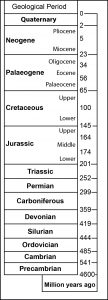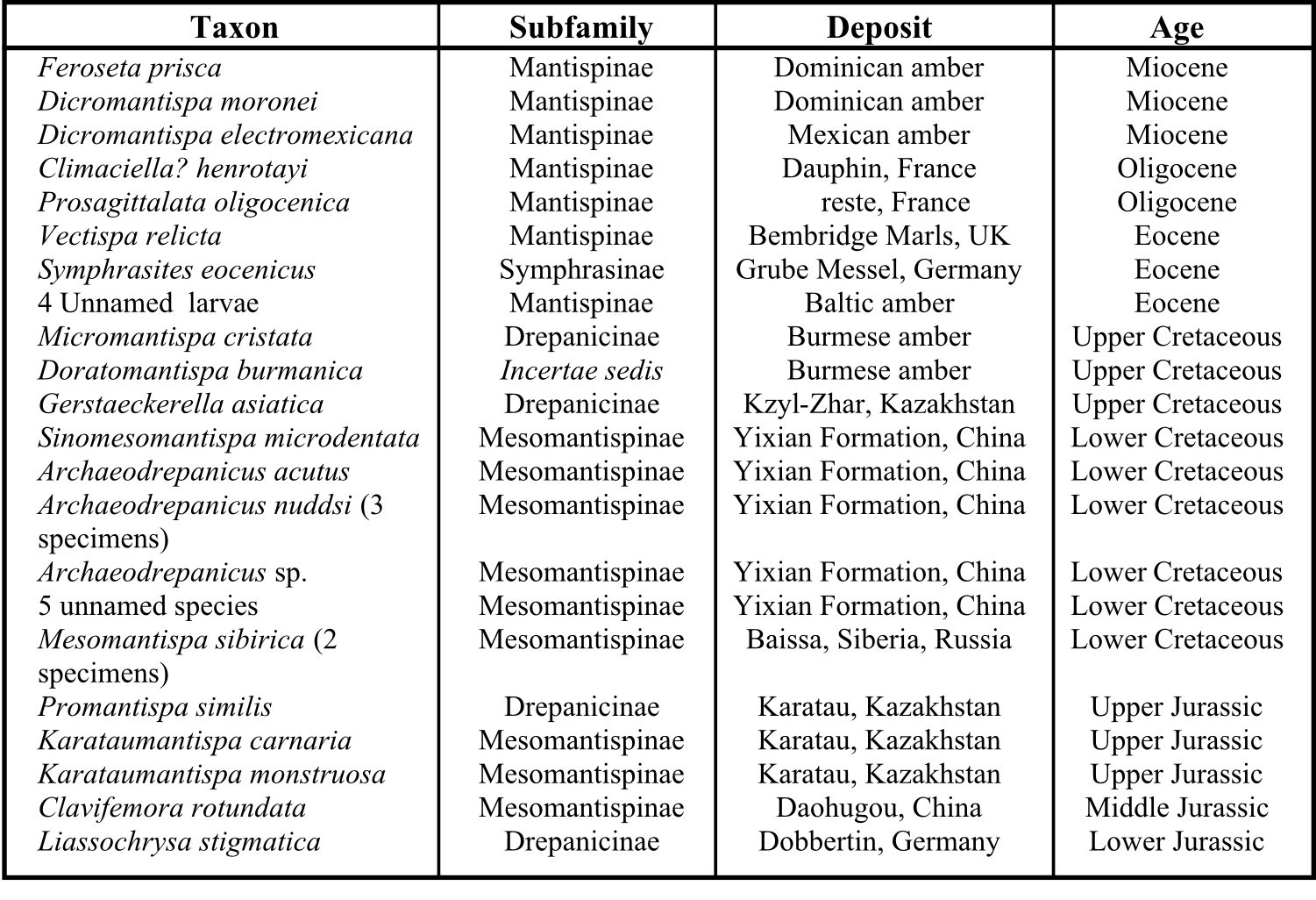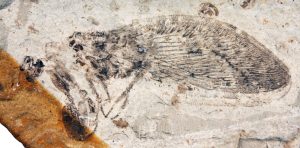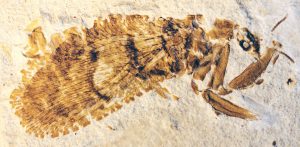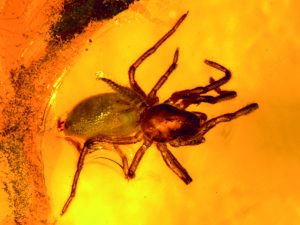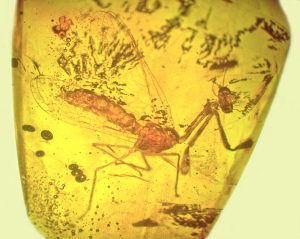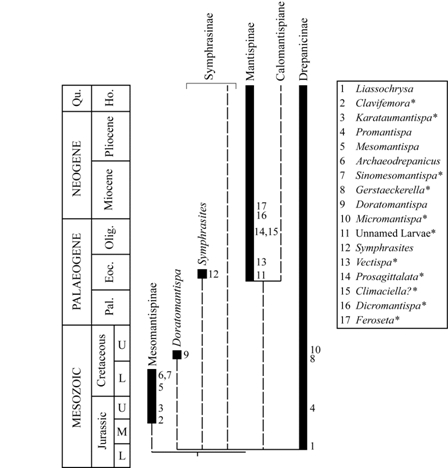Recently my paper on fossil Mantispidae was published:
Jepson, J.E. 2015. A review of the current state of knowledge of fossil Mantispidae (Insecta: Neuroptera). Zootaxa, 3964 (4): 419-432
This is the first paper resulting from my Alexander von Humboldt Postdoctoral Research Fellowship at the Museum für Naturkunde, Berlin. It reviews the fossil record of mantispids and brings together all the current known knowledge. In this blog post I’ll give a quick introduction to their fossil record.
A brief recap as to what Mantispidae are
Mantispidae are a specialized family of Neuroptera (Lacewings), which have raptorial forelegs (similar to praying mantises). There are approximately 410 valid extant species-group taxa and 19 fossil species, placed in five subfamilies (four extant and one extinct). For more information on what Mantispidae are see my older blog post.
Where did Mantispidae come from?
From the fossil record it has been interpreted that Mantispidae evolved in either Europe or Asia, in the Lower Jurassic or latest Triassic (see the geological timescale below for dates of periods). They are thought to have diversified in the Jurassic when all the continents were together, forming the supercontinent Pangea.
There are two potential candidates for ancestral mantispids: Prohemerobiidae from Europe and Permithonidae from Asia. These families have a similar wing venation pattern to Mantispidae, but more primitive. There is a problem however, these families, especially Prohemerobiidae are in need of revision (e.g. the fossils assigned need to be double checked to make sure they belong in the family). Until these families are revised it will be difficult to say for sure if they represent the ancestors of Mantispidae.
How many fossil mantsipids are there?
In the published literature 32 specimens of mantispids have been recorded, these range in age from the Lower Jurassic to the Miocene. From the 32 specimens, 19 species have been described and placed within 16 genera, and some are unnamed or not yet described. The fossils have been placed within the extant subfamilies Drepanicinae (4 specimens), Symphrasinae (1), Mantispinae (10) and the extinct subfamily Mesomantispinae (16). The table below gives an overview of the fossil record.
The oldest true fossil mantispid is from the Lower Jurassic of Germany, this is Liassochrysa stigmatica represented by an isolated forewing, and placed within the extant subfamily Drepanicinae – making this a very old subfamily. Other Jurassic mantispids are found from China and Kazakhstan. The Chinese specimen Clavifemora rotundata is the first member of the extinct family Mesomantispinae and the oldest mantispid with body parts, including the raptorial forelegs. Some of the younger Jurassic specimens from Kazakhstan also possess body parts.
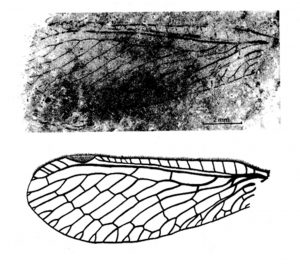
Liassochrysa stigmatica the oldest fossil mantispid, from the Lower Jurassic of Germany. Image modified from Ansorge and Schlüter, 1990
The Lower Cretaceous mantispids are all from the subfamily Mesomantispinae, these are mostly known from the Yixian Formation of China, with many beautifully preserved specimens with body parts. Another species is known from Russia, this is preserved as an isolated forewing. In the Upper Cretaceous a species is known from Kazakhstan, which is placed into the extant genus Gerstaeckerella. The genus Gerstaeckerella today is only known in the Neotropical region (South and Central America), so finding a fossil specimen in Kazakhstan suggests it was a much more widepsread genus in the past. Also in the Upper Cretaceous mantispids are found in amber: two beautifully preserved adults from Burmese amber. However, one of these species, Micromantispa cristata, should most likely be excluded from Mantispidae due to its differing body morphology and wing venation.
In the Palaeogene fossil mantispids are found in Europe (Baltic amber, Germany, England, and France). In Baltic amber four larvae are known. Being in amber means that the preservation is excellent, with almost complete specimens with minute detail. One of the larvae is of note as it is attached to a spider. It shows the characteristic spider boarding behaviour that extant Mantispinae have. These mantispids are parasites of spider egg sacs, and to enable them to easily find the egg sacs, the larvae attaches to the spider, which unwittingly takes it to them. The specimens from Germany, England, and France are represented by isolated wings in rock. The German species Symphrasites eocenicus is the only fossil representative of the extant subfamily Symphrasinae. Moving into the Neogene, all the mantispids here are represented by fossils in amber. They are found in Dominican amber and Mexican amber, two of these (one from Dominican and the Mexican specimen) are placed in the extant genus Dicromantispa, and the other Dominican fossil is placed in its own genus Feroseta. All these are beautifully preserved adults.
How are they related to each other?
Few attempts have been made to try and work out the relationships of both fossil and extant Mantispidae. The most recent is by Xingyue Liu and colleagues in 2015, this analysis included some but not all fossil specimens. Using their phylogeny (evolutionary tree) as a base, I inserted all the fossil taxa into their subfamilies and included their geological ranges. This shows what is currently known about the relationships of the fossils and extant taxa – I will try to resolve this more fully during my research.
References cited:
Ansorge, J. & Schlüter, T. 1990. The earliest chrysopid: Liassochrysa stigmatica n. g., n. sp. from the Lower Jurassic of Dobbertin, Germany. Neuroptera International, 6: 87–93.
Jepson, J.E. 2015. A review of the current state of knowledge of fossil Mantispidae (Insecta: Neuroptera). Zootaxa, 3964 (4): 419-432.
Liu, X., Winterton, S.L., Wu, C., Piper, R. & Ohl, M. 2015. A new genus of mantidflies discovered in the Oriental region, with a higher-level phylogeny of Mantispidae (Neuroptera) using DNA sequences and morphology. Systematic Entomology, 40: 183–206

